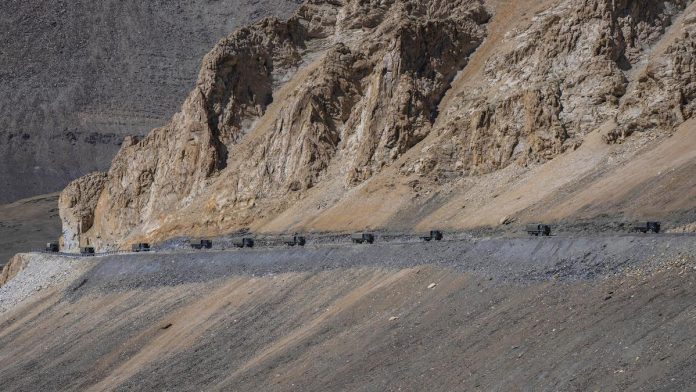The ongoing disengagement process between India and China along the LAC in eastern Ladakh marks a critical juncture in the region’s geopolitics. After four years of tense standoff and military buildup, External Affairs Minister S. Jaishankar’s recent remarks that “75% of the disengagement problems have been sorted out” offer hope for stability along the contested border. Jaishankar’s candid assessment in Geneva underscores the complexity of resolving the tensions that flared up in 2020 when Chinese and Indian troops clashed in Galwan, marking the first deadly encounter between the two sides in decades. This conflict fundamentally altered the status quo along the LAC, triggering heightened militarisation on both sides. While EAM pointed out that a substantial portion of disengagement issues has been resolved, the “bigger issue,” he emphasised, is the continued military presence at the border. This prolonged military build up exacerbates the potential for further clashes and continues to cast a shadow over any diplomatic breakthroughs.
Simultaneously, NSA Ajit Doval’s meeting with Wang Yi, a senior Chinese official, on the sidelines of the BRICS summit further highlights the delicate and multi-dimensional nature of the ongoing negotiations. Diplomatic engagement remains essential to ensuring that progress made in disengagement does not unravel. Factually, the border is not simply a line on a map but a historically contested region, where mistrust between the two sides runs deep. But the fact that the two countries have, despite their differences, managed to hold 31 rounds of talks through the Working Mechanism for Consultation & Coordination on India-China Border Affairs (WMCC) since 2020 is a testament to the determination to avoid escalation. However, the continued presence of large contingents of troops on both sides, even after several rounds of disengagement, raises legitimate concerns. The militarisation of the LAC poses significant risks, particularly in terrain characterised by harsh climatic conditions and treacherous altitudes. The potential for miscalculations or unintended escalations remains high, and both nations have recognised the need to address this issue.
The LAC standoff was shocking as it appeared to violate multiple bilateral agreements dating back to the 1990s, which had helped maintain peace along the border for nearly three decades. The sudden escalation during the COVID-19 lockdown was least expected. The Galwan clash that followed in June 2020, which resulted in the deaths of 20 Indian soldiers and at least four Chinese troops, marked a turning point in bilateral relations. India’s diplomatic response has been firm and consistent: there can be no normalisation of relations with China unless peace is restored along the border. India’s insistence on linking border peace with broader diplomatic ties highlights how deeply the LAC issue has affected the relationship. For China, the stakes are high, too. The strategic rivalry between the two Asian giants is not limited to the border issue alone. The broader geopolitical contest between India and China plays out in various arenas, including trade, technology, and influence in international organizations. Yet, despite their rivalry, both nations recognise the importance of a stable relationship. Indeed, a prolonged standoff or conflict between India and China could have serious ramifications for regional security, economic stability, and global diplomacy.
As the BRICS leaders’ summit approaches in October, where Prime Minister Narendra Modi and Chinese President Xi Jinping are expected to meet, the focus will likely shift towards finding ways to resolve the remaining issues at the LAC. The militarisation of the border remains a dangerous flashpoint that could unravel years of diplomatic efforts. While it is unclear how much progress will be made by then, the urgency to achieve full disengagement is palpable. Ultimately, resolving the LAC issue requires both India and China to disengage militarily but also rebuild trust. The two countries must continue engaging in frank, constructive, and forward-looking dialogue. A peaceful, stable border is in the interest of both nations and essential for the broader stability of the region.


